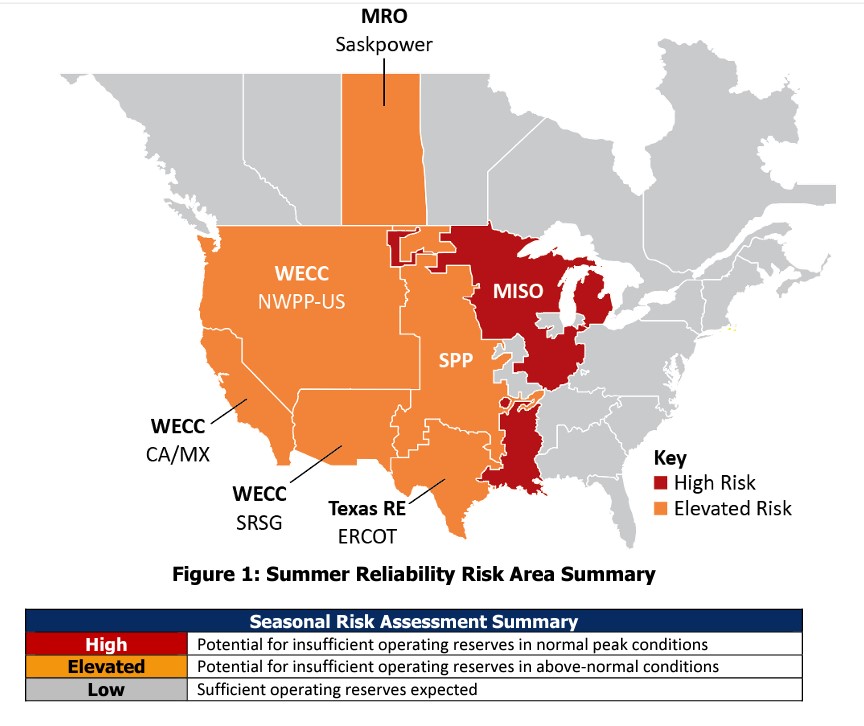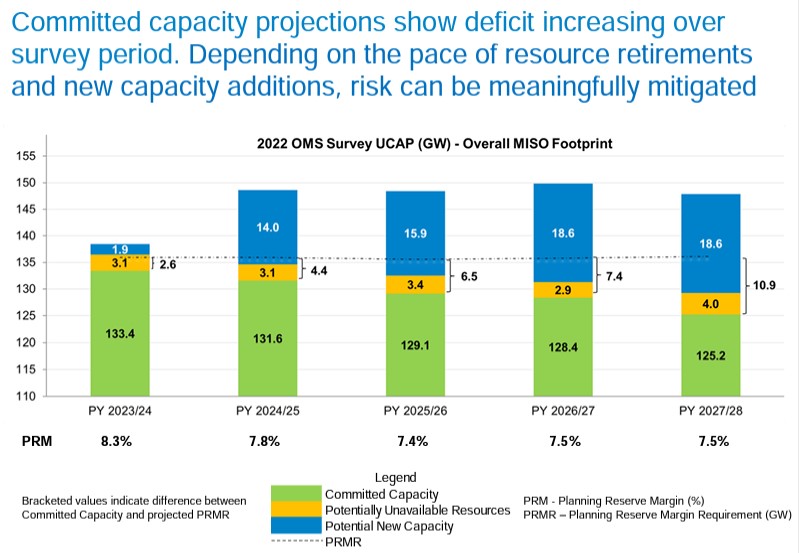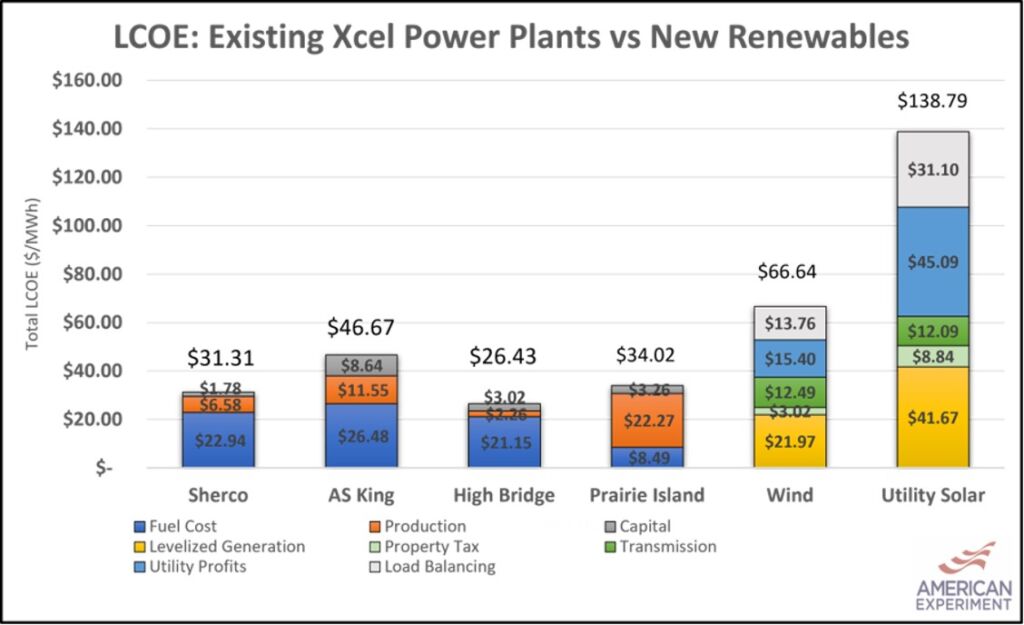Why the risk of blackouts in Minnesota continues to grow
A recent report by the North American Electric Reliability Corporation (NERC) has determined that the regional electric grid to which Minnesota belongs, the Midcontinent Independent Systems Operator (MISO), faces the highest risk of rolling blackouts in the country this summer.
Now, grid operators are bracing for the hot weather this week and hoping to keep the lights on. This trend is expected to worsen in the coming years because too many reliable power plants are scheduled to retire, and wind and solar lobbyists will almost certainly try to prevent new, reliable power plants from coming online.
Sunny, with a chance of blackouts
According to NERC, much of the country is at an elevated risk of not having enough electricity to meet peak demand, plus the margin of safety, this summer, but none are at higher risk than MISO.

MISO may simply not have enough reliable power plants on the grid this summer after 3,200 megawatts (MW) of reliable power plants, mostly coal and nuclear, retired last year. MISO’s problems are compounded by the fact that electricity demand is projected to grow by 1.7 percent this year.
As a result, MISO says there is a 1,230 MW shortfall in power plant capacity to meet its peak demand and reserve margin, an amount that could power nearly half of the homes in Minnesota on an average hourly basis.

This shortage of reliable power plant capacity means system operators in MISO are more likely to need operating mitigations, such as load modifying resources (LMRs) or non-firm imports, to meet reserve requirements under normal peak summer conditions. Each of these “operating mitigations” comes with its own costs.
Under more extreme circumstances, such as warmer temperatures, higher generation outages, or low wind conditions, areas of the MISO North and Central regions will face a higher risk of temporary “operator-initiated load shedding” to maintain system reliability. This is grid operator speak for rolling blackouts.
Unfortunately, the reliability of the electric grid could get worse in the coming years as more reliable power plants are retired.
Out with the old, in with the ???
MISO’s capacity shortfall is projected to grow to 2,600 MW by 2023, enough to power virtually every home in Minnesota on an average hour, and capacity deficits are projected to widen in subsequent years.
The graph below shows the capacity shortfall growing from 2,600 MW next year to 10,900 MW by 2027 as the green bars sink lower toward the x-axis. For context, 10,900 MW is more than the amount needed to generate Minnesota’s annual electricity on an average hourly basis. Of course, some hours will have much higher demand, and some hours demand will be lower, but the trend is troubling regardless.

MISO says that the risk of growing capacity shortfalls can be meaningfully mitigated if potential new capacity comes online or if resource retirements for coal and nuclear plants are delayed.
While adding new capacity, which would most likely be fueled by natural gas, would help shore up grid reliability, these plants will unquestionably face fierce opposition from wind and solar groups making their construction far from a sure thing.
Wind and solar groups actively undermine grid reliability
Adding new power plant capacity is fraught with challenges, especially if that power plant is supposed to be reliable.
For example, in Minnesota, Xcel Energy announced it would shut down all three units at the massive 2,238 MW Sherburne County (Sherco) generating station beginning next year for Sherco 2 (680 MW), Sherco 1 in 2026 (680 MW), and Sherco 3 (876 MW) by 2030.
Xcel’s original plan was to replace the retiring coal units with an 800 MW combined-cycle natural gas plant to maintain reliability, but the company caved to wind and solar special interest groups who, wrongly, argued the plant was not necessary for reliability.
Instead of building more reliable natural gas capacity, these groups, consisting of Fresh Energy, the Minnesota Center for Environmental Advocacy, the Clean Grid Alliance, the Union of Concerned Scientists, and the Minnesota Citizens Utility Board, argued the company should instead pursue wind, solar, battery storage, and limiting people’s access to electricity through LMRs, which seek to solve the problem of renewable unreliability by reducing electricity demand instead of providing adequate reliable power.
It was a textbook example of how these groups are willing to sacrifice reliability for more renewables.
A power plant in the hand
The ability of these wind and solar advocacy groups to actively undermine grid reliability by blocking new power plants is why Minnesota and other MISO states need to immediately stop the closure of existing reliable coal and nuclear power plants. These plants must continue running until reliable replacements are available.
Mitch Rolling and I argued for this exact strategy in the 110 pages of our comments on Xcel Energy’s plans at the Minnesota Public Utilities Commission. This strategy optimizes reliability and affordability because Minnesota’s existing coal plants provide some of the most stable and low-cost power in the state.
The graph below shows the cost of electricity at the Sherco and AS King coal plants, the High Bridge natural gas plant, and the Prairie Island nuclear plant.
Each of these existing plants operates at a far lower cost and more reliably than new wind or solar power, once often hidden costs like transmission, additional utility profits and property taxes, and “backup” power plant costs are accounted for.

Maintaining the existing reliable power plants in Minnesota and throughout the MISO region delivers far superior value, in terms of reliability and cost, than building new wind and solar facilities and hoping that new capacity can keep up with growing electricity demand.
Lawmakers throughout MISO must pump the brakes on reliable power plant closures to prevent massive capacity shortfalls in the very near future. Failing to do so will have severe negative consequences that are utterly preventable.